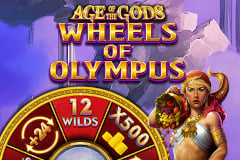Backgammon Casino Games
Of all the skill games that people have ever bet on in head-to-head competition, perhaps none is more popular than backgammon. The fact that this game revolves around using two dice to move pieces across a board may lead many to think that it is one determined primarily by luck: after all, nobody has control over their own fate when those pesky cubes are in play.
But this is exactly what those who want to play you for money are counting on you thinking. In reality, backgammon is one of the world’s great skill games, a test of strategy, tactics, and will that features gambling concepts even in high-level tournaments. A few games with someone who truly knows what they are doing will be enough to prove to you just how little the dice matter. Sure, they will often swing an otherwise close game, but over the long run, the better player will win more – and if there is a significant skill gap, even the best rolls won’t be enough to let the weaker player win.
This makes backgammon a little different than many of the skill games offered by Spigo, as there are plenty of other places – live, and even online – where you can gamble on the game, some of which are solely dedicated to it. But Spigo offers a simplified version of the wagering mechanics, focusing on just a single game played for a set stake. This makes it perfect for less experienced players who want to start betting on matches, even if more experienced and serious backgammon fans may want expanded features that can’t be found here.
Roll and Move
If you are starting a new game at Spigo, you’ll be able to get a stake in order to play for real money, or instead choose to play a fun game without cash on the line against other players or the computer. Once you’ve decided just how you’d like to play, you can start the game and be taken to the board.
If you’ve never seen a backgammon board before, it’s important to understand what you’re looking at. You’ll see the board divided up into four quarters, each of which features six triangles. These are known as “points,” and there are 24 of them in whole. The board is also divided up into halves, both left and right and top and bottom.
At the start of the game, each player will see their 15 checkers located at various points on the board. The white player will be looking to move their checkers clockwise towards the upper right, while the black player will be moving anti-clockwise towards the bottom right. Considering their ultimate goals, the checker locations at the start of the game for each player are as follows:
- Two located on the first point, furthest from their goal;
- Five located on the left-most point on that same side of the board;
- Three located on the fifth point from the left, on the side closer to their goal;
- Five located on the seventh point from the left on the side closer to their goal.
At the start of the game, Spigo will automatically roll two dice: one white, one black. The player corresponding with the higher roll will get the right to go first.
On each turn, the player will roll two standard six-sided dice. In most cases, players will then have the option of moving their checkers in one of the following ways:
- You may move two checkers, each moving a number of points equal to the number on one of the dice.
- You may move one checker a number of points equal to the total of the dice.
However, doubles are a special case. Should you roll two of the same number, you can consider yourself to have rolled four of that value, using them in the same ways described above. For instance, rolling two threes would allow you to move a single checker 12 points, or four checkers three points each, or two dice six spaces each, and so on.
It is not permitted to move onto a space in which the opponent has two or more of their own checkers already occupying a space. If the opponent has just one checker there, however, you may move to that spot. This is known as a hit, and it removes the opposing checker from play. Any pieces removed in this manner are placed on the bar in the center of the board. If you have any checkers on the center of the board, you must move them onto the board before making any other moves. These moves are handled just like any others, with them coming into play starting from the furthest point from your goal.
Players must use all of their dice to move if possible. If it is not possible to use all of your movements, some may be wasted; it is even possible to roll the dice, have no possible moves, and immediately pass your turn.
So far, we’ve been talking about the “goal” that your pieces are moving towards. In reality, they are moving towards the area known as your “home board.” This term refers to the final quarter of the board, the six points closest to the end of the path for you (in this version of the game, that will always be the upper right for white, and the lower right for black).
In any game of backgammon, your first objective will be to get all of your checkers into the home board. Once you have achieved this, you may begin moving your pieces off the board to the bank on the right, known as bearing them off. This is accomplished by moving checkers from points that correspond with the numbers on your dice rolls. For instance, if you roll a one, you may bear off a piece located on the final point, one away from the bank.
If you roll numbers higher than the amount of points away from the bank that any of your checkers are located, you can instead bear off the piece that is furthest away. If you roll too low to move anything off the board, you can still move pieces as normal, getting them closer for future rolls. Keep in mind that if any of your checkers are hit during this process, you will need to stop bearing the rest off until you once again get all of your pieces into the home board.
The winner of a game is the player that is the first to bear off all of their checkers. If you are playing for real money, the winner will receive the stakes, minus a small percentage kept by Spigo as rake. However, things are not always this simple. There are two ways in which a player may actually owe more money than the original stake, which are used in some implementations of the Spigo software.
The first of these is known as the doubling cube. If available, either player may use the doubling cube on their turn before rolling to offer a doubling of the stakes before their turn (this is also used in tournament play in order to double the number of match points being played for in a particular game). The opponent then has a choice between accepting the new level of stakes, or resign immediately, losing without allowing for the double. If the doubling is accepted, the opponent now has control of the cube, and may choose when (if ever) to offer yet another double.
As such, betting in this game is usually done on a per point basis. In addition, if a player loses without bearing off a single checker, then they are said to have lost a gammon, which counts for double a normal loss. Even worse is losing without bearing anything off the board and still having at least one checker either on the bar or in their opponents’ home board. In that case, the loss is known as a backgammon, and it counts as triple the points/stakes of a normal defeat.
Because this is a Spigo game, there’s one additional feature we should mention: the Jackpot Spin. In this particular title, you’ll start to fill the jackpot meter each time you roll a total of eight or higher. In order to completely fill the meter, you’ll need to hit that total six times in a row; any failed attempt will reset the meter, forcing you to start over again. Should you fill the meter, you’ll get a Jackpot Spin, in which you’ll have a chance to win the jackpot amount (displayed above the chat area at all times), though there are also smaller prizes available. This feature is only available during real money play.
A Lifetime to Master
Attempting to give any serious strategic advice on backgammon is a bit beyond the scope of an article like this; similar to chess, there are countless books written on the topic, and this is a game where even the best players in the world will not always make the best possible play on every turn. However, we’re happy to pass along a few tips to help you get started in learning this fascinating and challenging game.
In general, there are a few different types of strategies one might employ throughout the game. At a start, it doesn’t take players long to understand that keeping checkers from getting hit is a good idea. That means that, when possible, checkers are generally moved to places where they will have friendly company; when this is not possible, loners are kept in the places where they are least likely to run into opposing pieces that can hit them.
Once a player is sure they are closer to winning, they may try to turn the contest into a race, simply moving as fast as possible with no regards to playing defense. This “running game” can be counteracted by a number of defensive techniques. For instance, one can make sure to hold on to at least one strong point on the opponent’s side, leaving a large group there to pick off the opponents checkers, which must inevitably pass them to reach the home board. Walls of checkers that cover several adjacent points can also be used to prevent progress; with six points covered in this way, you may entirely stop your opponent from moving beyond a certain point, essentially holding the game up until you feel ready to break the stalemate. Such tactics can also be used on the opponent’s home board, usually as a way of trying to come from well behind by picking off checkers just before they are able to leave the board.
If your game uses a doubling cube, you’ll want to be very certain of where you stand before making or accepting an offer. Even if you are behind, it is sometimes better to play at the higher stake than to simply give up at the current bet level, provided your chances of winning aren’t too slim. One way to keep track of who is ahead (and by how much) is through the pip count. This is equal to the total number of points away a player is from bearing off all of their pieces; the player with the lower number is winning the race.
Of course, this is just an extraordinarily basic overview of backgammon strategy. There are an endless number of online resources on the game, as well as many great books that even the world’s best players have learned from. Players can study opening theory, endgame scenarios, and tactical and strategic concepts.
A Fun Game, But Be Wary
Backgammon is popular throughout the world, with just as many people playing the game strictly for its strategic challenge and for fun as there are who wager money on each match. That makes it an ideal inclusion for Spigo, which has implemented a host of similar skill games into their collection.
However, it is worth noting that the skill ceiling in this game is extremely high, and master players will always beat beginners. It’s likely that there will be sharks playing for real money even on this site, and if you aren’t up for the challenge, your chances of winning games will be slim to none.
That’s not to discourage you from playing, though: backgammon is a great game that can become a lifetime obsession. Just make sure that you play for stakes that are reasonable for you and your skill level, or be willing to spend a lot of time playing just for fun in order to build up the ability level to play against more serious opponents. This may be the most interesting of all the games Spigo offers, and is an excellent implementation, but it can quickly become a lot less fun if you’re up against opponents who are consistently beating you – even if you’re not playing for real money.







































